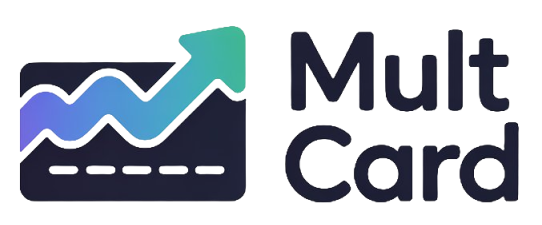In a world where nearly everything is available with just a few clicks, it’s no surprise that the financial industry has adapted. The days of needing to dress up, book an appointment, and wait in line at a bank to secure a loan are fading for many, replaced by the speed and convenience of digital lending.
This shift has opened up a world of possibilities for borrowers, offering unprecedented access to funds for everything from emergency expenses to major life projects. However, this digital frontier also comes with its own set of rules, risks, and rewards. Navigating it successfully requires knowledge and a careful approach.
What Exactly Are Online Loans?
At their core, online loans are simply funds borrowed from a financial institution entirely through a digital platform. Unlike traditional loans that require in-person visits to a bank or credit union, the entire process for an online loan—from application and document submission to approval and fund disbursement—happens over the internet.
These lenders can be online-only banks, peer-to-peer (P2P) lending platforms, or digital arms of established financial institutions. They leverage technology to streamline the lending process, often using algorithms to assess creditworthiness and make approval decisions in minutes rather than days. This efficiency is the primary appeal, offering a faster and often more accessible alternative to conventional borrowing.
The Different Types of Online Loans Available
The term “online loan” is a broad umbrella covering various financial products, each designed for different needs and financial situations. Understanding the distinctions is crucial to choosing the right one for you.
Personal Loans
These are versatile, unsecured loans that can be used for almost any purpose, such as debt consolidation, home renovations, medical bills, or a major purchase. They are repaid in fixed monthly installments over a set period (the “term”), typically from two to seven years.
Payday Loans
Payday loans are short-term, high-cost loans intended to be repaid on the borrower’s next payday. They are typically for small amounts and are easy to qualify for, often not requiring a hard credit check. However, they come with extremely high interest rates and fees, making them a risky option that can easily trap borrowers in a cycle of debt.
Installment Loans
This is a broad category that includes personal loans. An installment loan is any loan that is repaid with regularly scheduled payments, or installments. The loan term can range from a few months to several years, and they can be secured (backed by collateral like a car) or unsecured.
Lines of Credit
Similar to a credit card, an online line of credit gives you access to a set amount of funds that you can draw from as needed. You only pay interest on the amount you use. This offers more flexibility than a lump-sum loan, making it ideal for ongoing projects or unpredictable expenses.
Debt Consolidation Loans
Specifically designed to simplify your finances, a debt consolidation loan is a type of personal loan used to pay off multiple other debts (like credit cards or medical bills). You are then left with a single loan to manage, often with a lower interest rate and a single, predictable monthly payment.
Comparative Overview of Online Loan Types
| Loan Type | Typical Amount | Typical APR Range | Best For |
|---|---|---|---|
| Personal Loan | $1,000 – $100,000 | 6% – 36% | Large purchases, debt consolidation, home improvement. |
| Payday Loan | $100 – $1,000 | 300% – 700%+ | Dire, short-term emergencies only (use with extreme caution). |
| Line of Credit | Varies widely | 10% – 25% | Ongoing expenses, unpredictable costs, business cash flow. |
| Debt Consolidation | $5,000 – $50,000 | 7% – 36% | Simplifying and paying off high-interest credit card debt. |
The Pros and Cons of Borrowing Online
Like any financial product, online loans come with a distinct set of advantages and disadvantages. Weighing them carefully is essential.
Advantages of Online Loans
- Convenience: You can apply from anywhere at any time, without ever leaving your home. The entire process is digital.
- Speed: Many online lenders offer instant or near-instant pre-qualification decisions, and funds can often be deposited into your bank account within one business day.
- Accessibility: Online lenders often have more lenient qualification criteria than traditional banks, making them an option for individuals with less-than-perfect credit.
- Comparison Shopping: It’s incredibly easy to compare rates, terms, and fees from dozens of lenders simultaneously using online marketplaces and comparison tools.
Disadvantages and Risks
- Higher Interest Rates: The convenience and accessibility can come at a cost. Some online loans, especially for those with poor credit, may carry higher APRs than loans from a local credit union.
- Predatory Lenders: The anonymous nature of the internet makes it a breeding ground for scams and predatory lenders who charge exorbitant fees and use deceptive practices.
- Security Concerns: You are required to submit sensitive personal and financial information online. It is vital to ensure the lender’s website is secure and reputable.
- Lack of Personal Support: If you run into issues, customer service is typically handled through email, chat, or call centers, which can be less personal and effective than speaking with a loan officer face-to-face.
How to Apply for an Online Loan: A Step-by-Step Guide
The application process is generally straightforward, but being prepared can make it even smoother and increase your chances of securing the best possible terms.
- Assess Your Financial Situation: Before you even start looking, determine exactly how much you need to borrow and be realistic about what you can afford to repay each month. Review your budget and existing debts.
- Check Your Credit Score: Your credit score is a primary factor in determining your eligibility and interest rate. Knowing your score beforehand helps you know what to expect. You can often get your score for free through your credit card provider or a credit monitoring service like the ones offered by major credit bureaus.
- Research and Compare Lenders: This is the most critical step. Don’t jump at the first offer. Use reputable comparison sites and read reviews. Look at the APR (Annual Percentage Rate), not just the interest rate, as the APR includes most fees.
- Gather Necessary Documents: Most lenders will require proof of identity (like a driver’s license), proof of income (pay stubs, tax returns), and bank account information. Having digital copies ready will speed up the process.
- Complete the Application: Fill out the online application form accurately. Most lenders offer a “pre-qualification” step which uses a soft credit inquiry that doesn’t affect your credit score, giving you a preliminary offer.
- Review and Accept the Loan Agreement: If you are approved and decide to proceed, you will receive a formal loan agreement. Read this document meticulously. Pay close attention to the fine print regarding fees, prepayment penalties, and the repayment schedule before you digitally sign.
Key Factors to Consider Before You Click ‘Apply’
Beyond the basics, several details can significantly impact the total cost and your experience with the loan.
Interest Rates and APR
It’s crucial to understand the difference. The interest rate is simply the cost of borrowing the money. The Annual Percentage Rate (APR) is a broader measure that includes the interest rate plus any associated fees, like origination fees. Always compare loans using the APR for a true side-by-side cost analysis. A complete guide on APR can be found on Investopedia and is worth reading.
Fees and Penalties
Look out for hidden costs. Common fees include:
- Origination Fees: A fee for processing the loan, usually a percentage of the loan amount, which is deducted from the funds you receive.
- Late Payment Fees: A penalty charged if you miss a payment deadline.
- Prepayment Penalties: Some lenders charge a fee if you pay off your loan early. It’s always best to choose a loan with no prepayment penalty.
Lender Legitimacy and Reputation
Verify that the lender is legitimate. Check for a physical address and a phone number. Read reviews on independent sites like the Better Business Bureau (BBB) or Trustpilot. A legitimate lender will be transparent about their fees and terms and will never pressure you into making an immediate decision.
Red Flags: How to Spot a Predatory Online Lender
Protect yourself by watching out for these common warning signs of a scam or predatory loan:
- Guaranteed Approval: No legitimate lender can guarantee approval without first assessing your financial information.
- Upfront Fees: A demand for a fee before you have been approved or received funds is a major red flag and is often illegal.
- Vague Terms and Conditions: If the lender is not transparent about rates, fees, and repayment terms, walk away.
- High-Pressure Tactics: Any communication that pressures you to “act now” or claims an offer is “for a limited time only” is a tactic to prevent you from doing proper research.
- Unsecured Website: Ensure the lender’s website URL begins with “https://” and has a padlock icon, indicating it’s secure. The Federal Trade Commission provides resources on identifying these risky lending practices.
Making an Informed Decision
Online loans have fundamentally changed the borrowing landscape, offering a powerful and convenient financial tool. When used responsibly, they can help you achieve your goals, manage emergencies, and simplify your financial life. The key is to approach them not as easy money, but as a serious financial commitment.
By conducting thorough research, comparing all your options, and reading the fine print with a critical eye, you can harness the benefits of digital lending while steering clear of the potential pitfalls. Your financial well-being depends on making an educated choice. For further guidance and consumer protection information, it’s always wise to consult official resources that provide unbiased information about everything you should know about online loans before you borrow.




